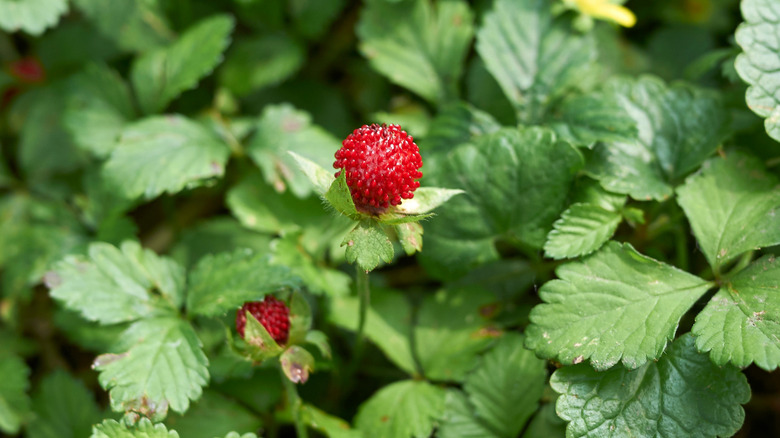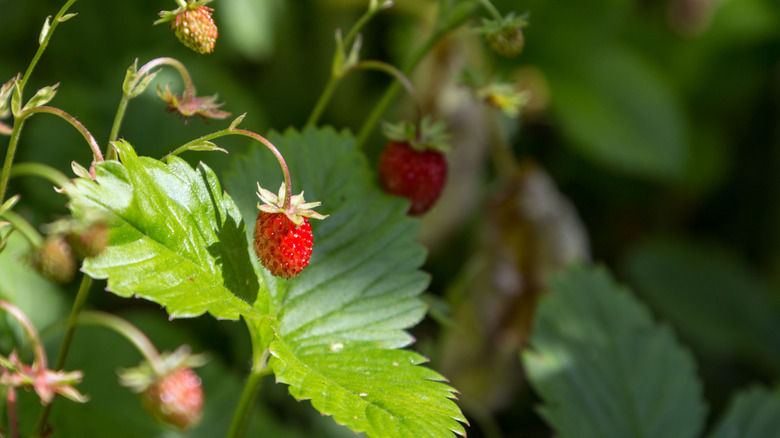Wild Vs. False Strawberries: What Do You Have And Why Does It Matter?
Wild strawberries (Fragaria virginiana) and false strawberries (Potentilla indica) look alike and often grow in similar habitats, but they taste very different and aren't closely related. The wild ones — sometimes called common, scarlet, or Virginia strawberries — have a superior flavor. It's stronger and sweeter than supermarket strawberries and sometimes slightly tart. False strawberries – also known as mock or Indian strawberries – may attract some hungry birds to your garden, but they are almost flavorless to humans. If anything, they taste like water despite having a dry texture. Though false strawberries aren't poisonous like some other harmless plant lookalikes, it's wise to know what you've encountered before tasting it.
If wild strawberries are growing in your yard, you can care for them much like regular strawberry plants. Just make sure they're not false strawberries, which are invasive in parts of Kentucky, Maryland, Michigan, Virginia, and West Virginia. Remove false strawberries if you come across them in one of these areas, and consider removing them elsewhere, as they're typically regarded as non-native weeds. Wild strawberries, on the other hand, are native across much of the United States and Canada. You might spot them on a hike through a field or forest.
There are a few simple ways to distinguish false strawberries from wild ones. First of all, false strawberry plants produce yellow flowers before developing their fruit. Second, the berries sport bumps you'll notice if you touch them. Third, the fruit and its leafy green sepals face upward as the plants mature. Wild strawberries don't do any of these things.
How to know if you've found wild strawberries
Though Virginia strawberries are the most common wild strawberries in many parts of North America, you may come across other types as well. These include woodland or alpine strawberries (Fragaria vesca). Woodland strawberry plants produce delicious fruit that's more cone-shaped than that of Virginia strawberries. Look closely, and you'll see that the seeds sit on the skin of the fruit. In contrast, Virginia strawberry seeds reside in small indentations on the outer layer of the fruit.
All native wild strawberries have white or pale pink flowers, and their berries point toward the ground from their stems, not toward the sky, as false strawberry fruits do. False strawberry seeds also protrude from the fruits more than wild strawberry seeds do. If no flowers or berries are present, inspect the leaves' toothed edges. They look pointy on wild strawberries and rounded on false strawberries.
Like many domesticated strawberries, which are a hybrid of the Virginia strawberry and a South American cousin called the beach strawberry (Fragaria chiloensis), wild ones often propagate themselves through runners known as stolons. Their berries are significantly smaller than those of cultivated plants, however. False strawberries also spread by putting out runners. Their combination of stolons, small red berries, and toothed leaves has fooled many gardeners and foragers, but it doesn't have to fool you. To keep these weeds at bay, try smothering them with an easy-to-grow ground cover.

